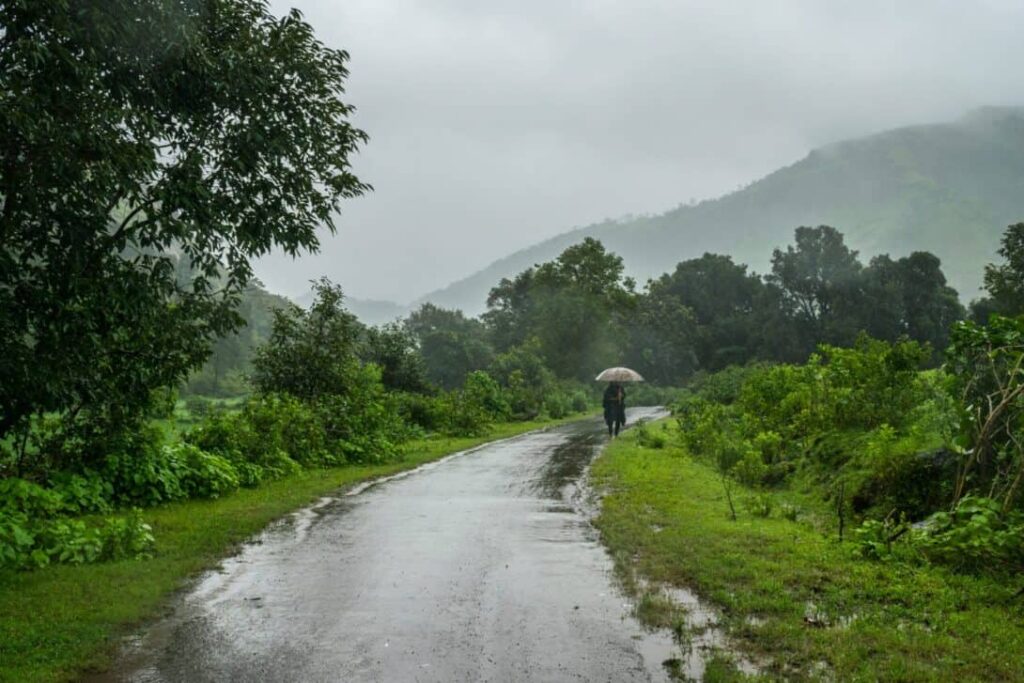The much-awaited monsoon season is here. The monsoon season is a relief for everyone as it comes after summers and refreshes everyone. However, we should not forget that it carries with it numerous deadly diseases in dairy animals. In India, the monsoon or rainy season lasts from June to September and by the first week of July the entire country experiences monsoon rain, on average south India receives more rainfall than north India along with most precipitation in northeast India.
During the monsoon period, humidity rises and inside the sheds, it may further increase due to expirated air, heat and wastes of animals leading to a deteriorating microclimate which goes beyond comfort limits and leads to various problems such as stress, injury, infectious diseases, parasites etc.
Animals need shelter to protect themselves from heavy rainfall, winds and hailstorm. Some of the common problems faced by the livestock farmers in the rainy or monsoon season and their preventive solutions have been discussed below:
Dairy animals’ risk of being exposed to multiple viruses, bacteria, and other infections is two times higher during the monsoon than in any other season. The high moisture content in the air enables harmful micro-organisms to thrive, resulting in the transmission of a number of diseases. Diseases like Foot and Mouth Disease, Anthrax, Black Quarter and Hemorrhagic Septicemia are associated with weather-related conditions.
Many farmers in India rear livestock that includes Cattle, Buffalo, Goat, Sheep, horses etc. Livestock rearing requires proper care and protection of the animals from rough or unpleasant weather. Animals need shelter to protect themselves from heavy rainfall, winds and hailstorm. Some of the common problems faced by the livestock farmers in the rainy or monsoon season and their preventive solutions have been discussed below:
Animals at High Risk:
- 1. Young animals
- 2. Sick animals/animals with a history of the disease
- 3. Pregnant animals
- 4. Lactating animals
- 5. Heavy animals
Care and management of livestock
- Concentrate feed must be stored in moisture-proof stores to avoid contamination, especially with aflatoxins.
- Improved ventilation was needed which can be met through exhaust fans, draft fans or other outlet ventilators. Protection from wind and rain would give animals more strength to resist the disease, he added.
- Vaccination and deworming: Vaccination and deworming schedules should be made in advance to undertake deworming and vaccination of major diseases of animals before the monsoon season.
- Feeding: With the downpour of rain, seeds which have remained dormant in the soil in hot weather due to lack of moisture, get a chance to sprout and germinate. Mostly the lush green grasses found in monsoon contain low fiber with high moisture. If animals feed on such grasses, nutrient deficiency starts appearing in animals with reduced dry matter intake and watery dung along with a fall in milk fat content. So it is essential to dry the feed/fodder before offering it to animals and maintain an appropriate dry and green fodder ratio (60:40). Animal grazing needs to be avoided as far as possible since there are chances of consumption of poisonous plants by the animal. Larvae on leaves of grasses may become a source of infection. Gradual changes in feed need to be done from dry fodder (mostly fed during summer) to mixed green fodder. The animal manger should be about one foot above the ground and 1.5 feet away from the wall as the moisture content of the wall may change feed taste. Prepare feed concentrate only 15 days in advance. Regularly add about 50g mineral mixture (Samridhi Gold) to the ration of animal
Do’s and Don’ts:
To minimize the impact of monsoon and to prevent serious ailment or death, the following measures are useful:
Do’s
- Keep updated on the local weather forecast.
- Adequate availability of feed and fodder and establishment of fodder banks.
- Ensure mixing of salt mixture/electrolytes (ORT LRG) with feed and water and provide balance feed, especially to dairy animals.
- The drinking troughs should be kept clean and animals should be provided clean and fresh water.
- Pregnant animals (more than 6 months) should be given additional feed.
- Materials like corrugated iron or timber, aluminium or galvanized steel should be used for animal shelters and roofs.
- The dead animal burial areas should be away from water bodies, and public areas and must be well protected with a display board.
Don’ts
- Avoid large number/overcrowding of animals in the animal shade
- Animal movement should be avoided during rains.
- Animals should not have to walk too far for water and feed.
- The carcasses of dead animals should not be discarded on the regular grazing routes of the animals and water bodies.
- Entry of animals into ponds and water bodies should be avoided.
- Animals should not be tied with electric poles and should be kept away from electrical instruments and area.



